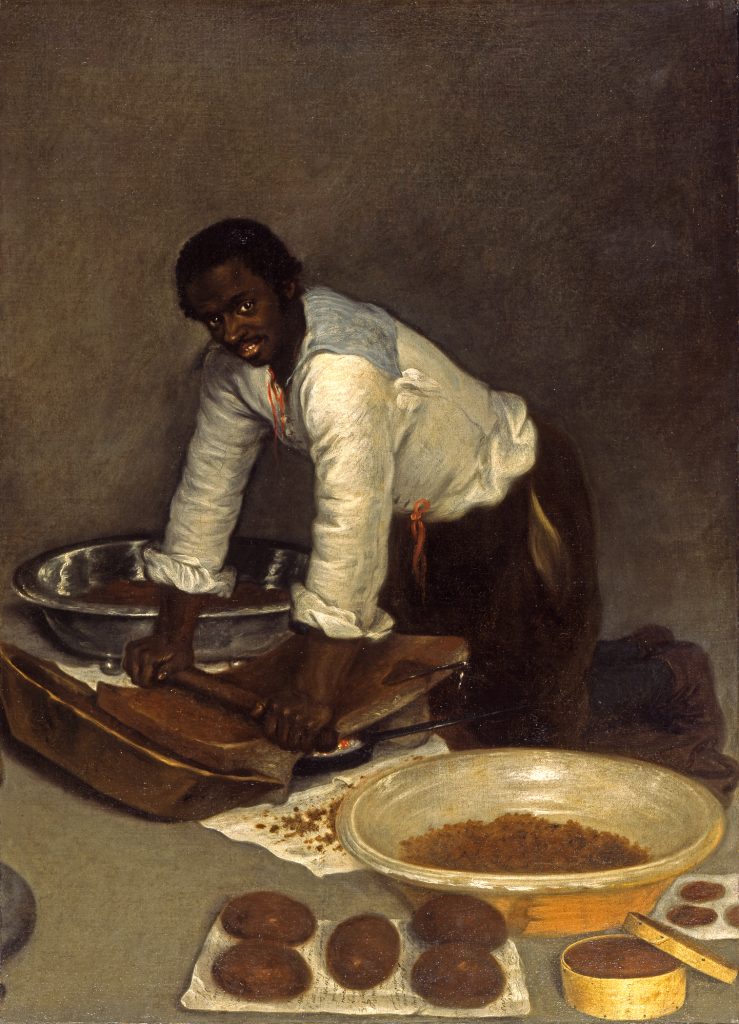A Man Milling Cacao into Chocolate with a Metate and a Mano (work of art)
Artwork Info
Key Ideas
- This oil painting depicts a traditional method of making chocolate. The man in this scene is crushing and grinding cacao beans using two simple tools.
- Chocolate originated in Mesoamerica. Spanish colonizers took over Tenochtitlan, the Aztec capital, in 1521. They took chocolate and the chocolate-making process back to Spain. Hot chocolate became a popular drink among the upper classes.
- There were many enslaved (and previously enslaved) African people living in Spain when this painting was created. The man depicted in this work may have been enslaved, or he may have been a free man working for pay in a Spanish household.
Learn More
This painting is both a portrait and a genre scene. Genre paintings show ordinary people doing everyday activities. In this painted scene, a man is preparing chocolate on a metate, a type of grinding stone that was widely used by natives of Mexico and Guatemala. The man is using a tool called a mano (a type of pestle) to crush and grind roasted cacao. This was a traditional chocolate-making method in Mesoamerica. The process involved grinding roasted cacao beans (with a mano) on a large metate. The metate had a fire under it, to melt the ground cacao. After the cacao melted, it was ground into a paste. This paste was mixed with boiling water, cornmeal, and spices to make chocolate. The chocolate pieces were formed into round patties that were used to make a hot chocolate drink.
After Spain invaded the Aztec city of Tenochtitlan in 1521, the traditional Mesoamerican process of making chocolate was appropriated into Spanish culture. “Drinking chocolate” became a popular beverage among the Spanish elite. During the 17th and 18th centuries, hot chocolate was a favorite drink of people of all social classes in Spain.
An unidentified artist created this painting between 1680 and 1780. Many enslaved people from Africa were living in Spain during that time period. Freed individuals often stayed and worked for pay in the same households where they had been enslaved. It is unknown whether the man in this painting was enslaved or if he was a paid worker.
tags: trade, food, work, identity, investigation, place, social studies
Additional Resources
Resources for Teachers
- Read an article about the history of chocolate.
- Read a description of the chocolate-making process (written by an English visitor to Spain in 1701).
- Read an article about slavery in early-modern Spain.
Resources for Students
- Watch a video of the chocolate-making process.
- Watch a video about Spain’s conquest of the Aztecs.
- View other Spanish paintings from the same time period.

